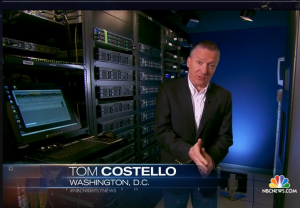Forty five years ago surveillance cameras, operated by the New City Police Department, debuted outside its City Hall. It didn’t take long for the widespread practice of Closed Circuit Television to catch on as other municipalities adopted it as a method of law enforcement. Today, surveillance video, dash cams and shoulder-mounted police cameras are emerging as popular sources of providing further context to videos captured by civilians with smart phones.
Although the subject of surveillance is not new there are fundamental aspects of its effective use that are bubbling to the surface – most notably the resulting data explosion and how municipalities should practically and lawfully manage it. Historically, the period of time that footage would be retained has been relatively short. Those tasked with managing it often (and quite frequently) recycle the medium on which it is stored – in other words they record over it.
Current events have led to a public conversation about the challenge faced by ‘recycling’. To illustrate this take a moment to view this March 2nd report filed from NBC News, entitled, ‘More Police Departments Equip Officers With Body Cameras’.
In the United States, this issue didn’t begin with the proliferation and ubiquity of smart phones. In 1991, Rodney King’s arrest was among the first, famous cases in which citizen-captured video (10 minutes long) was used as evidence. In this instance the L.A. District Attorney used the footage to bring charges against four police officers. At that time the circumstance of a camcorder being used for ‘citizen journalism’ was rare. Twenty five years later historic events are being captured at a break neck pace by anyone with a handheld device.
Even private business video gets tapped for its crime-solving potential when there’s an issue in the area of their cameras. One example of this was found in North Texas, where cameras adjacent to a business were instrumental in solving a famous murder case (i.e. ‘Vendetta’, Dateline, February 27th). And, of course, there’s all the footage still emerging about the events following the Boston Marathon bombing. The investigation into this tragic event employed private cell/camera video as well as stationery surveillance video to piece together the events and identify suspects.
The use of cameras – all types of cameras – is an explosive growth industry. It’s indicative of our insatiable appetite to capture, hold and share experiences. Further to this is that an increasing amount of these experiences end up as large, High Definition files.
So, where does all this content reside?
Be it from a police dashboard or a personal device, footage needs to be kept safe. While some of this (content) will sit for a short time, an increasing amount is earmarked to be archived for longer periods. As an example consider an incident-free night at a convenience store…chances are that the media storing that surveillance will be written-over after just a week. But if ever there’s a chance that it could be needed, many police business, and municipal surveillance video – even personal mobile phone video – has to be kept, securely.
Whether the data is being held in a public or private cloud, Seagate has the capabilities to take on these kinds of long-term data storage challenges. As part of this effort Seagate teams with video surveillance partners to provide storage for the surveillance equipment itself. One result of this collaboration is an ability to extend the reasonable life of the video repository by providing a second tier of storage for which the economics of retention make sense.
From back-up to ‘warm’ storage, Seagate Cloud Systems and Solutions (CSS) can help. Our organization has choices to ensure users can keep what they need–and even what they think they need– for as long as is needed.







